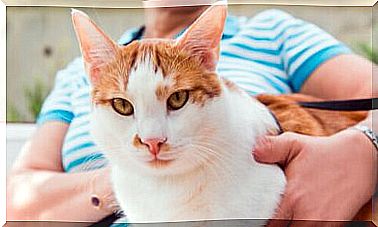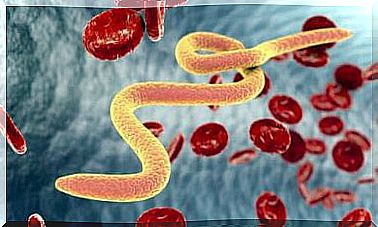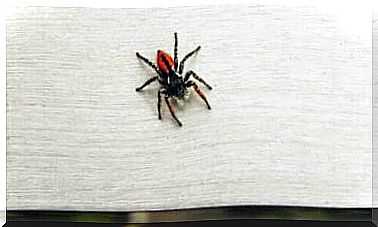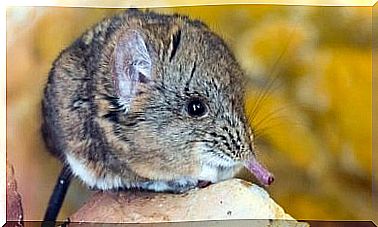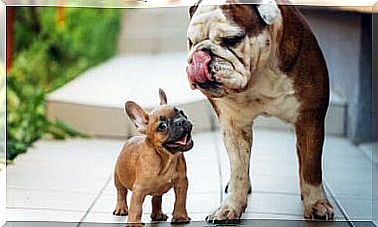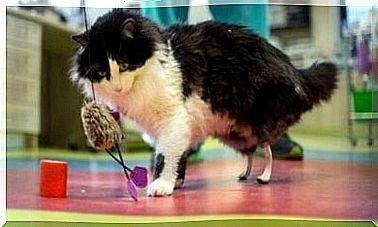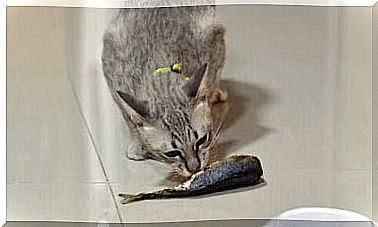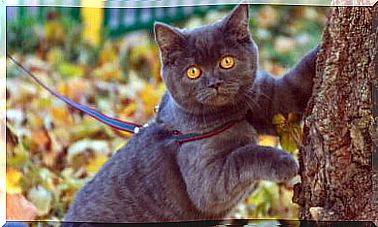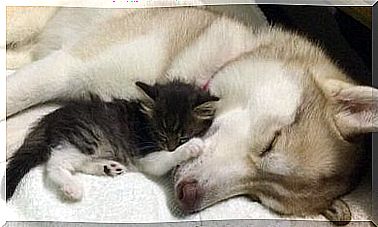The Dalmatian, A Very Elegant Best Friend
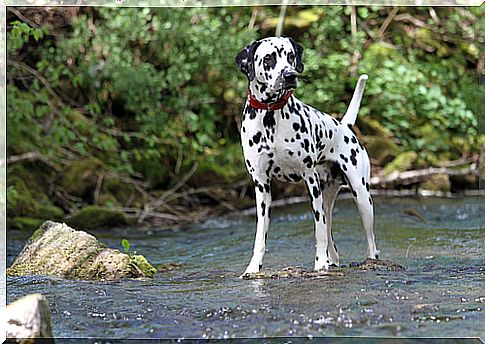
The Dalmatian is a well-known dog thanks to Dodie Smith’s book “The 101 Dalmatians”. Well, even more so thanks to Disney movies, both actors and cartoons, why are we kidding ourselves? But what is really known about the Dalmatian, other than the fact that it has spots? This is the right place to find out.
Where does the Dalmatian come from?
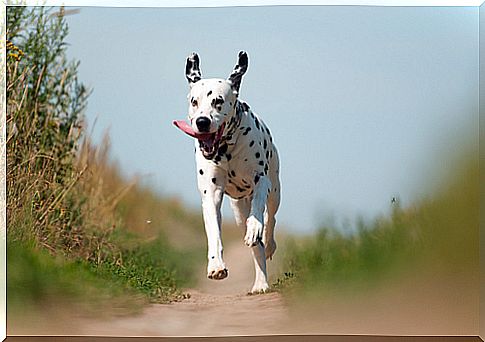
The exact origin of the Dalmatian is largely unknown, although thanks to drawings and paintings found in Croatia, it is believed to be several centuries old and to come from the city of Dalmatia (in Croatia) from which it takes its name.
Thanks to its size and way of moving, the Dalmatian was used as a symbol of prestige to accompany the carriages of the aristocracy protecting the horses.
Later, it was also used to accompany the firefighters’ carriages to have the way open for their horses and even today, this breed is associated with the profession, although it now travels in the car with the firefighters. On occasions he was also used as a sheepdog.
What is the Dalmatian?
The Dalmatian is a medium-sized dog, with good musculature and great resistance. Its paws are round with arched toes and its nails can be as white as the color of the coat’s patches.
The nose (ie the nose) is the same color as the spots and the eyes can be dark red or amber.
There are blue-eyed Dalmatians, but they are discarded as purebred and do not enter the crosses.
The ears are soft and end in a point, although they usually keep them folded in on themselves. The coat is short, shiny, hard and dense, with a white or cream colored background and black or brown spots.
For the dog to be well valued, the spots should be 2cm to 3cm in diameter in the loin area and smaller on the head and legs. Furthermore, they must be evenly distributed and have good definition.
It’s important to remember that Dalmatians are born spotless, completely white, and the spots don’t show up until later (but for those who have seen the movie, it’s hard to forget Glenn Close’s disgust when she realizes this).
This breed changes coat constantly, instead of changing once a year like other breeds. The Dalmatian can weigh from 24kg to 32kg and measure from 54cm to 61cm in height.
What is the Dalmatian temperament?
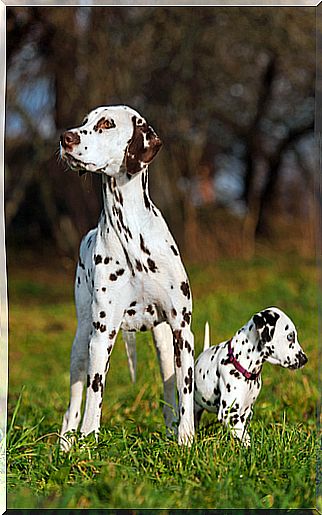
The Dalmatian is a vigorous, strong, muscular and active animal that needs constant activity and exercise.
Thanks to their past as chariot attendants, Dalmatians are fast runners with great endurance and make excellent companions for active people. They will enjoy taking long walks and running through the countryside.
They feel affection for human beings, adapt well to people’s moods and enjoy participating in what happens in their family, they are not suitable pets for children because their large size and energy can hurt them in some way.
Despite his affection for people, it is essential that the specimen is properly socialized and trained to be able to live with a family and it is not convenient to keep it in small spaces, as it needs space to move.
In addition, it should not be left alone too much time, as lack of attention could lead to destructive behaviors or inconveniences in the animal, which could even reach the point of biting its own paws, causing serious injuries and/or compulsive itching.
The Dalmatian is independent and calm, but he is also naturally reserved and territorial in temperament, although he socializes well with people and horses. In addition to being a companion animal, it can be trained as a guard, sniffer or show dog.
How is the Dalmatian’s overall health?
The Dalmatian is a strong dog in good health, although the breed has an indication of 10% deafness and they are known to have a uricotelic metabolism (which indicates that their urine is mostly made up of uric acid, rather than urea, which is the major component in urine in the rest of mammals, including other dog breeds).
This aspect can lead to the formation of stones, either in the kidney, bladder or urethra, which produces a slight irritation, or it can even block the flow of urine, and this can affect the animal’s life.
Therefore, the Dalmatian should follow a specialized diet low in purines, drink plenty of water and exercise regularly to avoid the formation of these calculi.
